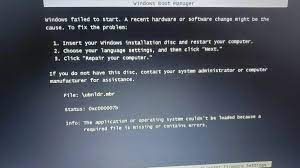Advertisement
How To Fix A Failed Microsoft Defender Update
Advertisement
Advertisement
Microsoft provides frequent updates to Windows and its components. However, although updates are generally helpful in improving system performance and fixing bugs, users often face problems when they download them.
There are plenty of fixes to try when a system update fails, but what should you do when a program update fails? In this complete guide, we will explore some of the solutions to try for Microsoft Defender Update won’t work, which is a common problem faced by both Windows 10 and 11 users. Proceed with the method that best suits your situation.
Understanding the causes of failed Microsoft Defender updates
Before going straight to troubleshooting, it is important to understand what could be causing the problem in your case. We did some digging and found that one or more of the following Microsoft Defender updates may be contributing to the problem.
A third-party antivirus solution installed on your computer is interfering with Defender updates, interrupting them or preventing them from starting.
The system itself is dealing with some sort of corruption error or inconsistency. When this happens, you may encounter one or more problems while performing routine operations.
Now that you know what could be causing the problem, it’s time we get started with the troubleshooting methods that can help fix the problem right away.
1. Disable any third party antivirus programs
It’s not uncommon for third-party antivirus programs to interfere with Microsoft Defender’s processes, especially in situations like the one at hand.
The only effective solution, in this case, is to disable all third-party security programs and then try to install Defender updates again. Once the update is successfully installed, you can enable the security programs back.
To disable security programs, you can simply right-click their taskbar icon and choose Disable > Disable until next restart. If you think an antivirus solution is indeed the culprit, we recommend you uninstall it and switch to one of the best third-party security solutions for Windows 10.
2. Reset Windows Update components
As we mentioned earlier, you may also not be able to install Windows Updates if the update components are corrupted or broken.
Because these components are required for the Update Service to work, you must repair them in order to install the latest available updates. The best way to repair these components is to reset them to their default state.
You can now close the Command Prompt window and check if the problem is resolved.
3. Restart Microsoft Defender Service
There is also a possibility that the problem lies with the Microsoft Defender service itself. The service may be dealing with a temporary glitch or may simply be disabled.
In this method, we will restart the Microsoft Defender service and set its startup type as Automatic. This way, the service will automatically launch when you boot into the system, allowing the system to install its updates without any issues.
After this is done you can try to reinstall the targeted update and check if the problem is now fixed.
4. Manually install the targeted update
Windows also gives you the option of manually installing pending updates if automatic installation doesn’t work.
We have a complete guide on how to manually install Microsoft Defender updates, and we recommend that you follow the steps outlined to install your target update.
For those who cannot install updates by following the instructions there, here is another way to install updates manually that has worked for some other users.
Once the command is executed, check whether the update has been installed successfully or not.
Update Microsoft Defender Successfully
Security tools like Microsoft Defender keep your system safe from both internal and external threats. The program scans your system files and detects any potential problems that may put your system at risk. However, in order to function properly, it needs to be updated regularly just like other system apps.
The methods listed above might have helped you to install the latest Microsoft Defender update. Whenever the issue reappears, we recommend you to contact the official Microsoft support team so that they can investigate the root cause of the issue and suggest a viable solution accordingly.
Advertisement




